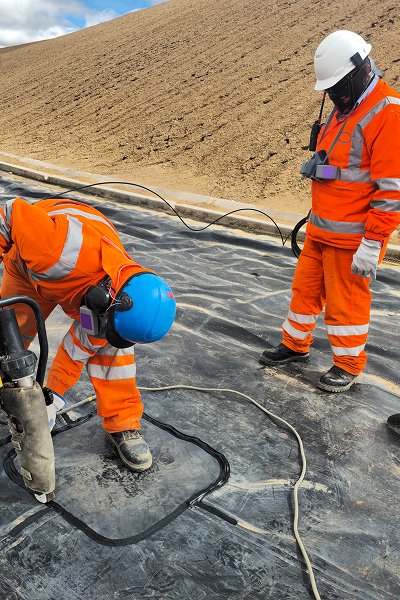Definition of Geogrid:
Geogrid is a geosynthetic material used to enhance soil stability, improve engineering bearing capacity and reduce settlement deformation. It is usually made of high-strength polymers (such as polypropylene, polyethylene, polyester or glass fiber) and is formed into a mesh structure by stretching, welding or weaving.

Classification of Geogrids:
Unidirectional geogrid: It has high tensile strength only in the longitudinal direction and is suitable for projects that require unidirectional reinforcement.
Bidirectional geogrid: It has high tensile strength in both the longitudinal and transverse directions and is suitable for projects that bear multi-directional loads.
Plastic geogrid: It is made of high-density polyethylene (HDPE) or polypropylene (PP), has strong corrosion resistance and is widely used.
Fiberglass geogrid: It is woven with glass fiber, is resistant to high temperatures and has high tensile strength. It is mainly used for asphalt pavement reinforcement.
Polyester geogrid: It is made of high-strength polyester fiber coated with polymer, has good flexibility, and is suitable for soft soil foundation reinforcement.
Steel-plastic composite geogrid: It is made of steel wire and plastic, and has both the high strength of steel and the corrosion resistance of plastic. It is suitable for projects with high bearing capacity requirements.
Performance Characteristics of Geogrids:
High strength and high stiffness; the high tensile strength of geogrids can effectively resist soil deformation and improve the stability of engineering structures.
Durability and corrosion resistance; geogrids of different materials have strong resistance to ultraviolet rays, chemical corrosion and biodegradation, and are suitable for various complex environments.
Easy construction; geogrids are light in weight, easy to transport, and convenient to construct, which can effectively reduce construction costs and time.
Application Areas of Geogrids:
Road engineering: used for road and railway roadbed reinforcement to prevent settlement and increase road service life.
Slope protection: enhance slope stability and reduce landslide and erosion risks.
Dam and water conservancy projects: used to reinforce dams and improve anti-scouring capabilities.
Mines and landfills: enhance foundation bearing capacity and prevent soil movement.

Construction Method of Geogrid:
Construction preparation;
Clean the foundation and ensure the construction surface is flat.
Determine the laying direction of the grid and adjust the position according to the design requirements.
Construction Steps:
Laying the geogrid: Unfold the grid to avoid wrinkles and looseness.
Fix the grid: Use anchor nails, U-shaped nails or geo-nail to fix the edge.
Filling material: Lay the filler evenly on the grid and compact it in layers.
Quality inspection: Ensure that the grid is tightly combined with the filler without obvious deformation.
Conclusion:
As an important geosynthetic material, geogrid plays a key role in infrastructure construction, slope stabilization, dam reinforcement and other fields. Its high strength, durability and economy make it an ideal choice in modern engineering. If you have special customized products, please feel free to contact our team.


